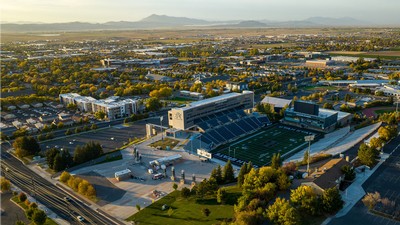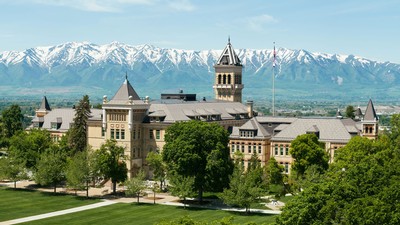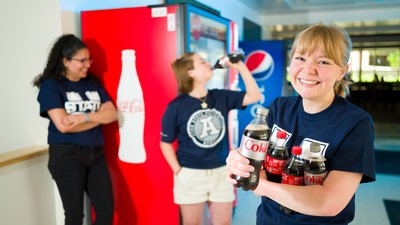Academic Avatar: USU Professor Levels Up USU Course With Homework Gamification
By Daniel Carolan |
Whether you’re solving sudoku, crushing candy or flinging furious fowl, interactive games have become a default part of many people’s lives. Where some see a chance to zone out, Department of Watershed Sciences faculty Janice Brahney sees an opportunity to enhance the way information is absorbed by students in one of her courses with interactive games.
Brahney recently worked to “gamify” two biogeochemistry courses, an area of knowledge she sees as important for building foundational understanding of the connections between human decisions and the natural world. She began implementing alternative homework assignments in the curriculum this past fall.
“The field of biogeochemistry provides a powerful window to examine and solve some of the most critical environmental problems we face,” Brahney said.
The challenge is to help students from across campus with no background in the field get access to the important concepts in the curriculum.
To make things more accessible to students from a variety of backgrounds, Brahney created a version of her course with no prerequisites or prior training required and gave students the opportunity to take part either in traditional-style assignments or to engage in gamified lessons over the course of a semester, the latter of which most students opted into.
Students created their own avatar in an animated adventure story-based game (think the classic game Myst) where users relied on scientific concepts to solve puzzles, answer questions, and assist other characters they encountered (including a farmer, librarian, Brahney’s avatar, and three cats who provide encouragement and comic relief).
The settings include a university campus, a cartoon world and an enchanted forest. To gain access to a new part of the game, students solve a biochemistry-themed puzzle about why a group of trees is sick, relying on lecture content to solve the issue of nutrient imbalance.
In another choose-your-own-adventure style puzzle, the gamer is thrust into a primordial ocean where they have to use scientific concepts to make decisions as a one-celled organism — to help it evolve, thrive or go extinct. The experience highlights the biogeochemical history of the planet and makes connections to real-world environmental patterns and challenges today, she said.
A cat named Lyra (based on Brahney’s real-life pet) provides the introduction to the ocean world, declaring “The door stands as a portal to a realm where life has only just begun, and your mission … is to decode the mysteries of our existence and connection to the planet’s chemistry.”
Prioritizing a strategy to make the information accessible to all types of learners, Brahney also implemented a hybrid approach to course evaluations, embracing the concept of “ungrading.” Students who struggle with conventional homework and test taking, as well as those dealing with anxiety, are able to accumulate points by having high engagement with course content within the games and external content related to biogeochemistry.
Meanwhile, those who tend to do well with traditional assignments still have the opportunity to complete coursework in that style.
“Ungrading is a way to liberate the learning environment,” Brahney said. “A hybrid version ultimately gives students more flexibility.”
Even considering the notable benefits, gamifying a course is a lot of work, according to Brahney. She created the bulk of the assignments using PowerPoint with help from the programming language Visual Basic. While the alternative assignments have a been a hit with students, software limitations and time constraints prompted Brahney to begin looking for grants to help up her game.
“Ideally, I’ll work with a real programmer and animator, or even people on campus who might be interested in developing these interactive games as well as some of my lecture content,” Brahney said. “Software developers seem excited to work with content for college students, so there is a lot on the horizon as far as ways to enhance learning and the experience of students in my courses.”
WRITER
Daniel Carolan
Staff Assistant
Quinney College of Natural Resources
435-797-2463
daniel.carolan@usu.edu
CONTACT
Janice Brahney
Associate Professor
Department of Watershed Sciences
435-797-4479
janice.brahney@usu.edu
Comments and questions regarding this article may be directed to the contact person listed on this page.







